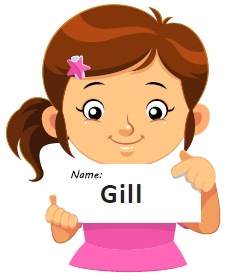This problem solving activity has a number focus.
Gill is playing with her name and with numbers.
She lets all her consonants equal 1.3 and all her vowels equal 0.5.
So the value of Gill’s name is 1.3 + 0.5 + 1.3 + 1.3 = 4.4
What is the value of your name?
Change the rules so that the value of your name is 4.253
- Perform addition with decimals.
- Order decimals.
- Devise and use problem solving strategies to explore situations mathematically.
In this problem students are substituting values for the letter their own names. It is a precursor to algebra which seeks to generalise number. To succeed in this problem, students should have knowledge of recognising, ordering and adding and subtracting ones, tenths, hundredths, and thousandths.
Other similar Number problems include: Points, Level 1; Names and Numbers, Level 2; Multiples of a (Algebra), Level 3; Go Negative, Level 4; and Doubling Up, Level 5.
The Problem
Gill is playing with her name and with numbers. She lets all her consonants equal 1.3 and all her vowels equal 0.5. So the value of Gill’s name is 1.3 + 0.5 + 1.3 + 1.3 = 4.4
What is the value of your name?
Change the rules so that the value of your name is 4.253
Teaching Sequence
- Tell the students Gill’s story
- Have each student find the value of their own first name. As the students solve the problem circulate asking questions that focus on their understanding of the addition of decimal numbers.
How are you adding these numbers?
What is the value of the … digit in the number?
Is your answer reasonable? How do you know? (estimation)
How do you know that you are correct? - With a partner, check that they have both found the correct value for their name.
- Have students locate themselves in order by the total value of their name, around the side of the classroom.
- Challenge the students to work in groups to find a way of ending up with the same number value, 4.253, for their own name.
- As solutions emerge, have students share these and explain how they have changed the rules.
- Discuss and have students solve the extension problem.
Extension
Using Gill’s original substitution, what is the biggest and smallest value that you can find using names in your class?
Solution
The answers that you get for the first part of the question will depend upon the names of the students in the class.
To get a name with a value of 4.253 will require some imagination. Students may abandon the consonant/vowel value rule and use arbitrary values for individual letters in their name, adjusting the final letter to ensure that the total value is 4.253.
